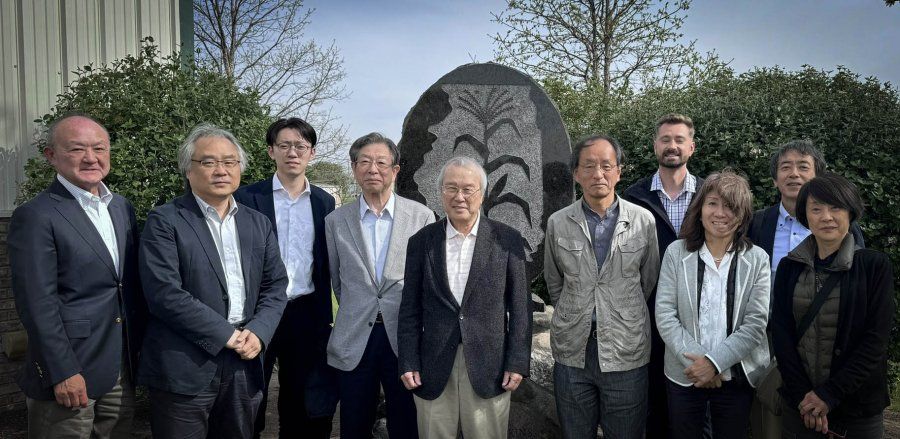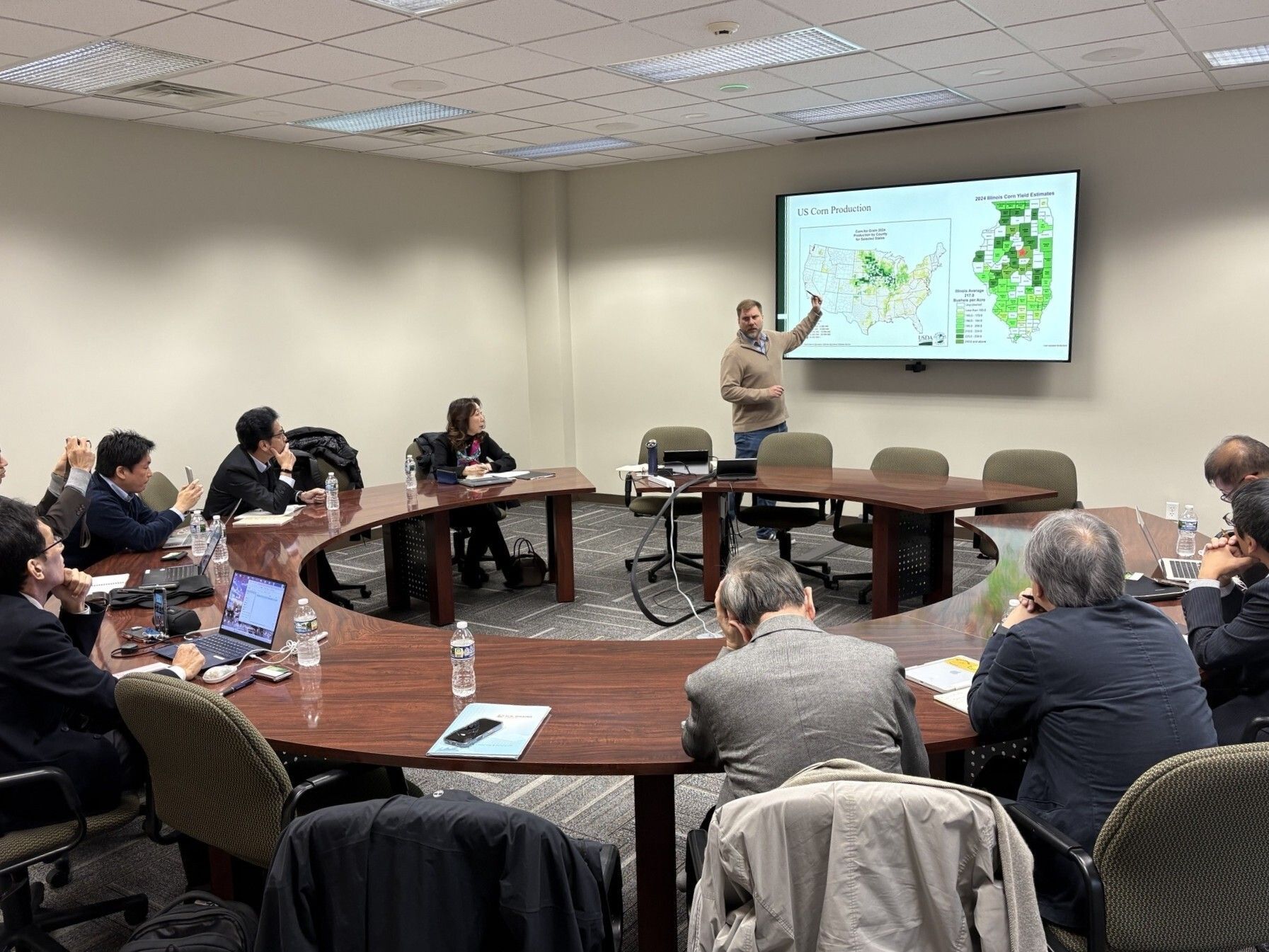Japanese Media Team Learn About Illinois Agriculture

In a partnership between IL Corn and the U.S. Grains Council, 12 members of a Japanese media team toured Illinois this week, beginning in Chicago and traveling through McLean and Piatt County, ending in St. Louis. They marveled at experiencing some of the most fertile soils and farmland on the Earth and focused their study on the overall carbon intensity (CI) score of U.S. corn and corn co-products.
The goal of the mission for the Japanese media team was to apply their learnings on CI score and the practices and efficiencies that lower CI score to a new target for their country to lower greenhouse gas emissions from transportation fuels. Recently, Japan has approved the import of U.S. corn-based ethanol as a fuel that will help them achieve these GHG emissions reduction goals.
Their agenda included visits to Marquis Energy in Hennepin, IL, the largest corn-based ethanol exporter in the U.S., as well as a stop at the IL Corn home office in Bloomington. Together, these visits centered the group on how corn is grown in Illinois, what conservation practices are reasonably implemented in various soil types within the state, and how farmer practices impact the CI score of both corn and ethanol.
A visit to a farm in Piatt County helped the team understand the risks and agronomic implications of some of the most impactful conservation practices for CI score. Jim Reed, their farmer host and a Director for the U.S. Grains Council, answered a lot of questions about tillage, herbicides, and how he balances his applications and trips over the field.
The group also visited two other ethanol plants – ADM in Decatur and Green Plains in Madison, IL, to learn about ethanol production and exports, and how the companies have invested in their facilities to lower the CI of their ethanol and plan to work with farmers to improve on-farm conservation in the future.
Tommy Hamamoto, Japan director for the U.S. Grains Council said the primary objective of the trip is to “let them understand that the U.S. has ample supply of corn for food, feed and fuel, and it will continue growing in the future — so they will not need to be concerned about a shortage ... of corn.”
In the current marketing year, Japan is the second largest foreign market for U.S. corn, importing nearly 152 million bushels through February 2024. The country has set an annual target of using 222 million gallons of ethanol in on-road applications through 2028. Japan also plans to be a leader in sustainable aviation fuel (SAF) adoption, which may require imports of nearly 2.4 billion gallons of low-carbon ethanol by 2030.
These types of trade missions are regularly hosted by IL Corn and farmer volunteers in Illinois to build relationships, help our international customers understand the corn or ethanol they are buying, and better position U.S. corn and corn co-products for international sales.











































































































